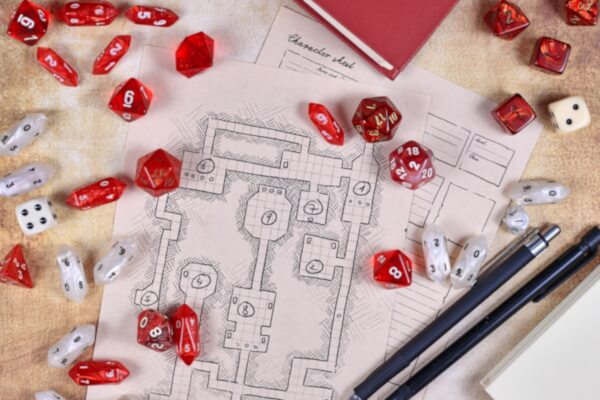From the pixelated early days of the Nintendo Entertainment System to the then-groundbreaking polygon experiences of the Nintendo 64, gaming has been a constant companion for me as a child. Here’s what I’ve experienced with and learnt about the medium back then and what it means.
Let’s take a nostalgic trip down memory lane, shall we? Revisit the gaming consoles and experiences that have left an indelible mark on our lives — if you’ve started with gaming as early as I did, that is.
This article will follow my past self from the initial astonishment that accompanied my first encounters with video games — and the occasional confusion — to the development of a deeper understanding of and appreciation for games and their sometimes very elegant ways of communication and interaction.
We will delve into the concept of ‘gaming literacy’ – the ability to comprehend and engage with the intricate systems that make up even the average gaming experience. We will examine why this literacy is crucial to acquire, and we will discuss a few examples of how knowledge about the concept has been applied in game design, building a pool of shared symbols to rely on when creating and playing games.
My first Gaming Experiences … and Perplexities
My first experiences with video games were filled with both awe and bewilderment. Let me take you back to those early gaming memories where I marvelled at the interactive worlds unfolding before my eyes while also grappling with frequent puzzlement regarding the inner workings of this strange new medium.
Nintendo Entertainment System
It all started like this:
One evening after dinner, my father went over to the living room and turned on some grey box I think I had never even noticed before. It was the Nintendo Entertainment System. Iconically, the first video game I ever saw was Super Mario Bros. It was so cool to see my father play that game! I don’t think he played for very long, but it certainly left an impression.

Over the next few days, I became familiar with the console myself. We had a strange collection of games with some classics (like Ice Climber) and some games I guess not many people bought (like some random sports games — I remember this being my first encounter with golf). It took me quite a while to try every one of them.
The way video games worked wasn’t explained to me very well, or I just didn’t understand it, since for years I believed that every possible image the TV could display was somehow on the cartridges! You know, like in cartoons, where every image you saw had been hand-drawn — I knew how those worked, and so I was utterly amazed by the sheer number of images necessary to put together a full game!
There were several other instances where I was quite baffled. For example, I didn’t understand why there was no way to defeat the enemies in A Boy and his Blob. It was possible in Super Mario Bros., so there had to be a way to do it here too, I thought. My mother allowed me to play for 30 minutes a day, so I probably spent a week trying to figure out how that game actually worked (which even today stands out as one of the stranger games out there, I suppose). Needless to say, I never finished it.
I remember a few other things about that time:
- I enjoyed watching my father play Kid Icarus. In the dungeons, my mother drew the map on paper. I spent an afternoon grinding hearts from snakes, but was afraid of the reapers, and the eggplant wizards made me super nervous.
- Zelda II was a very inspiring experience. It was so different, and I quite liked the whole concept. I also spent an afternoon grinding in this game, gaining levels for Life, Magic and Attack. I also found the dungeon music super cool. I would have been confused by the world map perspective, had I not played the GameBoy Zelda before where I needed, like, a few hours to understand that it wasn’t a malfunctioning side view, but a bird’s-eye view! It sounds ridiculous now, and you may be laughing, but my mind just couldn’t grasp it back then for some reason. (Oh, it just occurred to me, speaking of GameBoy: I read the term ‘handheld’ as a German word, which is possible, but means ‘hand hero’, and I was like, yeah, I mean, the thing is pretty cool, so they call it a ‘hero’, seems a bit weird, but whatever.)
- Super Mario Bros. 3 also had me ‘grinding’, so to speak: In the 8th world, I replayed those short levels where you get an item at the end a number of times. I guess my goal was to completely fill the inventory with good items (Fire Flowers and Super Leaves, I suppose).
These are very fond memories of mine. And now that I write about it, I think it influenced me in some ways. I’m interested in mythology and dark things, still like music that is a bit like that Zelda II dungeon theme, and I actually enjoy grinding in JRPGs (to some extent). In general, I think having such memories with my parents involved in the gaming experience could be one of the reasons I love games that much.
(Yeah, this might have gotten me a little sentimental.)
Super Nintendo Entertainment System
I got the Super Nintendo Entertainment System for Christmas — with Super Mario World. I can’t remember how I even learnt back then that SNES was a thing, but I’m pretty sure I knew I was getting it, being excited as you used to be as a child.

As far as I recall, I got The Legend of Zelda: A Link to the Past a day later. I found the movement animation pretty weird (actually, I still do).
The SNES era was when I got into RPGs — slowly. Encountering new game mechanics, I needed a bit of time once again to fully realise what was going on.
First, there were the damage numbers in Secret of Mana. They vanished at the same time as the player character’s stamina reached 100% and the sprite flashed, so naturally, I thought that was me collecting the number! I must have misunderstood what HP are too. There’s just no way I would have gotten that immediately. I also learnt the meaning of the slash in a ‘current/max’ format here.
Then there was the turn-based combat in Lufia. That was weird! I also didn’t understand the visual representation of attacks – which did not connect, but looked like ranged or even remote attacks, which baffled me as a child. Why was there no animation of the heroes running towards the enemies before swinging their swords? Children don’t understand abstractions like that, and they don’t understand anything about how much work it takes to animate sprites.
I was impressed by Illusion of Time and Terranigma, as I have laid out in detail in another article now almost a year ago.
But despite being quite sluggish at picking up genre rules, I learnt a lot from these games.
For example, Illusion of Gaia taught me about the Incas, Mu, the Great Wall of China, Angkor Wat and the Tower of Babel. This game also featured an ending scene which was pedagogically valuable in that it made a statement about how the developers of the game had always been good at school, and how otherwise, the game wouldn’t have been possible to create. My mother made sure I was aware of an ‘important message at the end’ before I attempted to beat the final boss. I’m pretty sure it worked and had at least some effect on me. I did take school relatively seriously.
From Terranigma I got the names of the continents, especially ‘Eurasia’, which is a term you don’t hear very often. I also got interested in our world map and eventually got my own that I looked at for long periods of time, learning where all the European and North-African countries were located.
Back in the days, RPGs came with a guide that contained descriptions, artwork and a walkthrough, and in the Secret of Evermore guide, I encountered the word ‘teenager’ for the first time (which, read as a German word, would mean ‘tea gnawer’, and I had no idea what that was supposed to mean) as well as the name Claudia Schiffer (it said something along the lines of the protagonist dreaming about a woman with that name, I think?).
Nintendo 64
First of all, I am happy to proclaim that I was not at all bewildered by the 3D perspective of Super Mario 64, my first Nintendo 64 game! That’s something.

I really enjoyed the Nintendo 64 era. There were so many great games!
There was, of course, The Legend of Zelda: Ocarina of Time, which I got, once again, for Christmas. I couldn’t wait!
There was Jet Force Gemini, an underrated masterpiece by Rare. Which I was allowed to play because it were only insects you had to shoot and it wasn’t real blood (although there was a lot of whatever it was). GoldenEye, on the other hand, I was not allowed to play, but did so nonetheless at a friend’s house.
When I was older, I got, in fact, the permission to play Perfect Dark as well as Shadow Man, the latter being very creepy in a good way, but also pretty stressful and difficult, and thus, I never made it very far into the game.
But at least I did understand the symbols and mechanics. At this point, I had finally come to terms with games in general. Everything I experienced was fully comprehensible to me. I was, so to speak, a gaming literate.
Gaming Literacy
‘Gaming literacy’ might be a term you’ve never heard before. But it is an important concept for game developers, and at least an interesting one if you’re ‘just’ a gamer.
What is Gaming Literacy?
‘Literacy’ refers to being knowledgeable about a certain topic, especially in that you can ‘read’ the symbols associated with it.
Gaming literacy describes the degree of understanding in regards to symbols used in games.
‘Symbols’ in this context can mean icons and other imagery, but it also includes any other abstract representation that has become a convention to some extent (and is, therefore, rarely explained). Basically, this ‘symbolism’ or ‘symbolistic system’ comprises everything a person has to learn (or is expected to have learnt) about the medium of games in order to play them successfully.

I would also say that there’s a technical and a historical aspect to it: Your gaming literacy would be considered even higher if you also have some idea about how a game is actually created (concepts and theories, code, assets) and how these things had to be created in the past, especially with regards to hardware limitations as well as tools and skills available within and to the industry.
When people use the term ‘video game logic’, they also invoke the notion of gaming literacy.
Why is Gaming Literacy important?
Gaming literacy is important because you don’t want every single game to explain basic concepts again, even if it was presented as a skippable tutorial. At some point, the medium has to be considered at least somewhat mainstream, and thus, a bit of player knowledge should be assumed.
This point has been reached in my opinion.

We’ve come a long way, and most players, even young ones, understand digital interactions quite well, I’d say, and therefore, they do have a better understanding of games than I had as a child.
In addition to being able to recognise ‘gamey’ elements and interact with them proficiently, gaming literacy is also required in order to discuss and critique games on any level above ‘This game is awesome!’ or ‘What the heck is this mess?!’.
What are Examples of Gaming Literacy applied?
Let’s have a look at a few examples of game elements a player would require some literacy in order to understand them.
- Colour coding: Many games make use of colour coding to convey information. For example, games may choose to colour everything friendly blue and everything hostile red. That way, players may know roughly what to expect when they encounter a new element that has one of these colours.
- Critical hits: The screen flashes and the damage number is higher than usual? Well, most of you won’t need a notification to inform you that you just landed a critical hit. And most of you will assume that the hit dealt double, maybe triple damage.
- Death equals Game Over: Some games still tell the player that having 0 health or 0 HP means that there will be a game-over screen and you will be set back to the last save point. But do you really need that information in 2024? I’d say no.
- Exploring yields rewards: There’s the main path ahead, but also a branching path to your left. Why would you go there? For treasure, of course! You just know that games are designed that way. If you go where you’re not supposed to go and find nothing there, you’re disappointed, right? You’re like: ‘What’s this? Did the devs forget to put a chest here? What a waste of my previous time!’
- Explosive barrels: In reality, barrels rarely contain any explosive material. In video games, many of them do. If they don’t, it’s very likely they contain gold instead. Which is also unrealistic, I have to tell you.
- Healing exists: This is not obvious, if you think about it. Even though most games have some way of quickly healing the player character, it is a pretty gamey concept, isn’t it? Bandages don’t work that way in real life, and there are no magic potions to restore exactly 120 health points.
- Heart equals health: A heart is a symbol for health in video games. Even though this can be inferred rather easily, there was probably some game that has taught you that — and you don’t need to be told ever again.
- Paint on objects: Games may put some splashes of paint on ledges, crates or other objects to indicate that the player can (or should) interact with them. Ideally, the paint isn’t too obvious, but does somewhat blend with the environment to make it look relatively natural while still functioning as a symbol.
- Quest markers: There’s a map in the upper right corner of the screen, and there’s a yellow marker on it. You can be pretty sure that the marker represents the place you’d have to go in order to advance the main quest (you also somehow know what main and side quests are, by the way). You may have skipped the tutorial that told you this, so you must have learnt it somewhere else before. Huh, curious!
- Saving: Unless there’s an autosave function, you’re supposed to either find save points in the wild (what?) and use them to save your game or just do so from the menu every now and then. There aren’t many games where you can’t save. Games tend to be pretty long, after all, at least too long to complete in one session (in most cases).
There are many other elements you encounter in games where you don’t need a tutorial to understand them. Think about it. You’re an experienced gamer, and you’ve learnt quite a lot playing games! People who haven’t played very many games may be confused by some of the things you find completely normal or even ‘intuitive’.
Conclusion
As we’ve journeyed from the pixelated realms of the Nintendo Entertainment System to the expansive (but still pretty edged) 3D worlds of the Nintendo 64, it has become clear that gaming is more than just simple entertainment: It requires a form of literacy that still evolves with each generation of consoles and gamers.
This literacy allows us to navigate game worlds with ease — and lets developers craft games that don’t have to be 80% tutorial despite being packed with features and mechanics.
As technology advances and the medium continues to become even more sophisticated, the requirements in terms of gaming literacy will expand, encapsulating ever new symbols. This will continue challenging us to learn and adapt, making it harder for new players to get into gaming and keep pace. On the other hand, game developers will probably be able to build on top of a rising base level of literacy among the new- and average-player bases.
***
How did you start your ‘gaming career’? Which game or gaming moment played a vital role in developing your understanding of games? Have you ever thought about the concept of gaming literacy before? If so, when and why? Share your stories and thoughts in the comments below!
